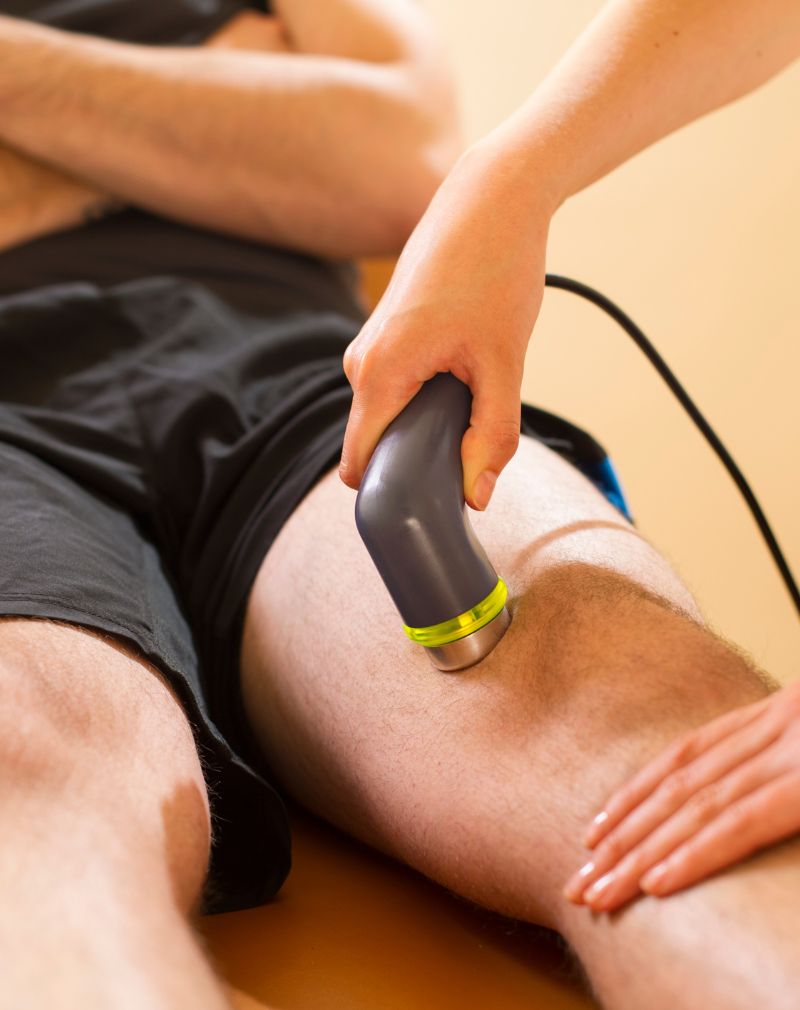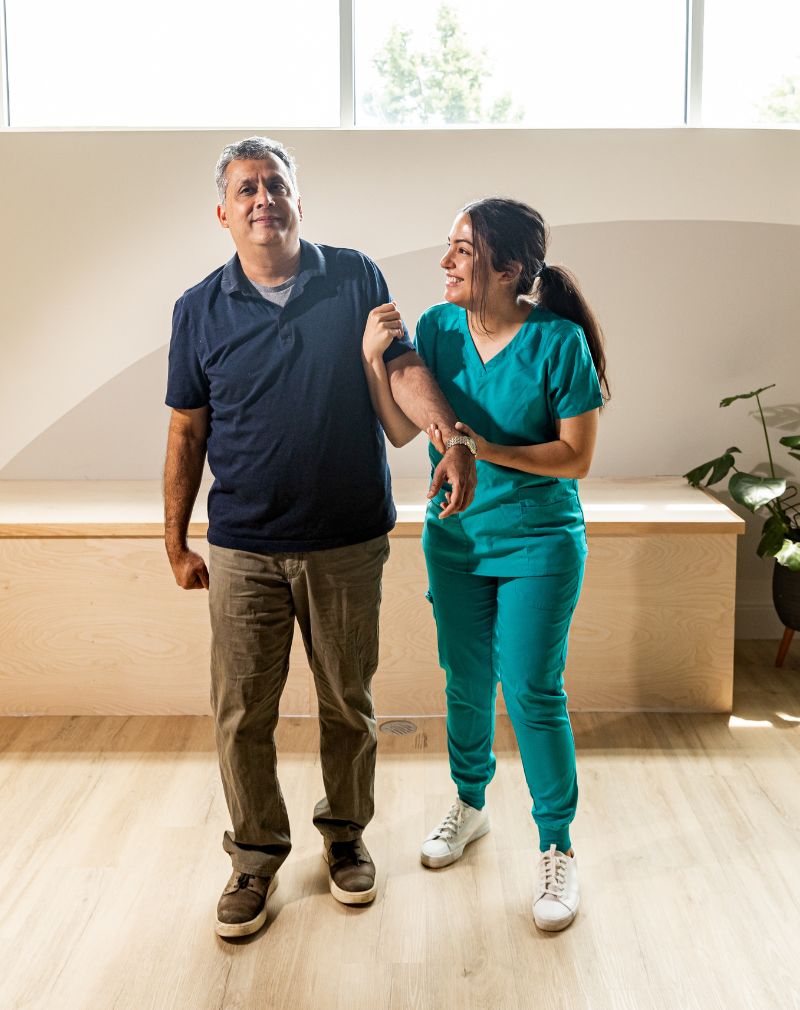Over 3.5 million young athletes get injured playing sports every year. Sprains, strains, and concussions don’t make headlines, but they’re everywhere—on school fields, in neighborhood gyms, during weekend games that were supposed to be harmless fun.
These are things most of us don’t think twice about. Until it’s our kid limping off the pitch. Until it’s our shoulder that won’t lift past eye level. Until we can’t climb stairs without wincing.
The truth? Most injuries don’t have to get that bad. But they do, because we delay. We wait for the pain to scream before we listen. By then, recovery is longer. Harder. More frustrating than it needed to be.
Pain doesn’t always explode. Sometimes it builds like a slow fire. A wrong twist here, a missed stretch there and suddenly, your body stops cooperating.
At The American Wellness Center in Dubai Healthcare City, our Sports Medicine Team is built for exactly this. We don’t just treat injuries. We treat people. People who want to move again, train again, live without flinching at every step.
This isn’t about pushing through pain. It’s about doing the smart thing before it becomes the hard thing.
Key Pain & Injury Statistics (2024–2025)
Every year, around 3.5 million young athletes get injured playing sports. Roughly 775,000 of them land in the emergency room. That’s not a blip. That’s a crisis we ignore because it’s common.
Sprains and strains make up about 30 percent of all sports injuries. Knee injuries are next, accounting for around 20 percent. Fractures hover near 5 percent. Concussions sit somewhere around 10.
The ACL? It’s a known weak point. Roughly 200,000 Americans tear it every year. Teenage girls are at the highest risk, especially in sports that involve cutting and pivoting.
Hamstring strains are another problem. They make up about 15 percent of all club-season injuries. And more than a third of those will happen again.
Common Injury Types & What Drives Them
Sprains and strains are some of the most frequent injuries seen in both recreational and competitive sports. They typically occur when ligaments or muscles are stretched too far or torn. Sudden movements, poor technique, or lack of warm-up are common causes.
Overuse injuries, such as tendinopathies or stress fractures, develop slowly over time. They’re often linked to repetitive training without adequate rest. Young athletes who specialize too early in one sport are especially vulnerable, as their bodies don’t get the variety or recovery time they need.
Concussions happen when a blow or jolt to the head disrupts normal brain function. While they can occur in any sport, girls in basketball and soccer report higher rates than boys in similar disciplines. Symptoms can range from headache and confusion to memory issues and emotional changes.
ACL injuries are typically caused by sudden changes in direction, jumping, or landing awkwardly. They’re common in high-intensity sports and can take 6 to 12 months to fully recover from, often requiring surgery and rehabilitation.
Back and chronic pain are less dramatic but no less disruptive. They often result from poor posture, muscle imbalances, or long-term strain. If ignored, they can interfere with both performance and everyday movement, turning into long-term issues.
Smart Strategies That Actually Work
Injury management doesn’t start at the hospital. It starts before the injury even happens. Prevention, quick response, and the right kind of rehab can be the difference between a few sore days and months off your feet.
Start Before it Starts
Most injuries don’t come out of nowhere. They build quietly. Tight hamstrings, poor form, zero warm-up—that’s all it takes.
- Warm-up routines are not optional. They prepare joints, loosen muscles, and switch the brain into movement mode.
- Lifestyle counts. Poor sleep, low hydration, and skipping meals increase your risk without warning.
- Nutrition matters more than most people think. Low-calorie diets, low-carb fads, and skipping breakfast can lead to fatigue-related injuries, especially in runners.
Act Early, Don’t Wait
When pain shows up, respond fast. The sooner you intervene, the less damage it does.
- RICE isn’t old-school, it’s essential: Rest, Ice, Compression, Elevation.
- If you feel a pop, lose balance, or can’t bear weight, don’t wait it out. That’s not soreness. That’s damage.
- At The American Wellness Center in Dubai Healthcare City, we offer early triage by our Sports Medicine specialists. You get clarity fast, and a plan even faster.
Rehab isn’t Just Rest
Recovery isn’t passive. It’s guided, structured, and hands-on.
- Our physiotherapists build rehab plans that are as specific as your injury.
- We use sport-specific protocols that address the actual demands of your movement.
- Pain education is part of our work. We help you understand why the pain exists, not just how to push through it.
For When it’s More Than a Strain
Some injuries need more. We’re ready for that too.
- Concussion care follows a strict, step-by-step protocol. No shortcuts. No guesswork.
- ACL injuries come with tailored recovery timelines, strength benchmarks, and return-to-play testing.
- We don’t just help you heal. We help you come back better.
Inside the Sports Medicine Team at AWC
Every athlete walks in with a different story. We listen before we act. At The American Wellness Center in Dubai Healthcare City, our Sports Medicine team looks at the full picture, not just the scan.
What We do Differently
- We assess movement, not just symptoms.
- We track strength and imbalances across the body.
- We train you to move with intention, not just repetition.
Real Care for Real People
A 17-year-old footballer walked in three months after an ACL tear. He had seen two clinics, still couldn’t jog. He thought the season was over. We rebuilt from scratch. Stabilized the joint. Reconditioned the quads. Aligned his gait. He returned five weeks ahead of schedule. Not rushed. Ready.
This is what tailored care means. ACL or ankle sprain, concussion or chronic back pain—we meet you where you are and move with you forward.
When You Shouldn’t Wait It Out
There’s soreness, and then there’s a signal your body is asking for help. Knowing the difference can save you months of rehab.
You need to see a specialist if…
- Your pain has lasted more than 72 hours and hasn’t improved.
- You feel unstable, like a joint is about to give out.
- You’ve taken a blow to the head and feel foggy, dizzy, or off.
- The pain wakes you up at night or changes your gait.
- You’ve had the same injury more than once.
When Self-care is Enough
Muscle soreness after a hard workout is normal. So is stiffness the next morning. If the pain is mild, goes away with rest, and doesn’t return when you move again, you’re probably in the clear. But when in doubt, don’t guess. Get checked.
The American Wellness Center in Dubai Healthcare City is designed for moments like these. Our Sports Medicine experts don’t just treat the injury. They break down the mechanics, fix what caused it, and build you back stronger.
This Doesn’t Have to Be the End of Your Season
Pain changes everything. It limits movement. It messes with confidence. It makes people second-guess the sport they used to love. But the right kind of care doesn’t just fix the injury, it gives you back the trust you lost in your own body.
At The American Wellness Center in Dubai Healthcare City, we don’t hand out generic advice. We build real plans for real people. Our approach is clear: act fast, rehab smart, and return strong. You don’t have to push through pain in silence, and you don’t have to figure it out alone.
If pain is getting in the way of your training, your game, or just your ability to move through life the way you want to—come see us. The sooner you start, the faster you get back to being you.



